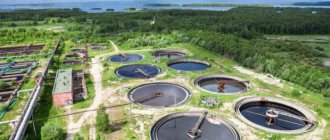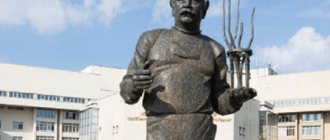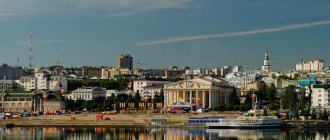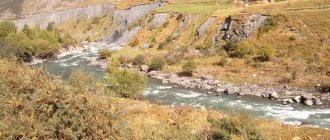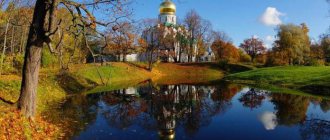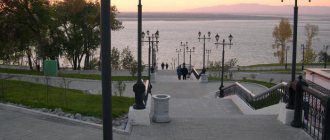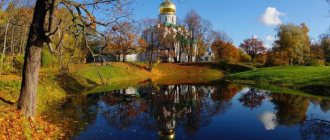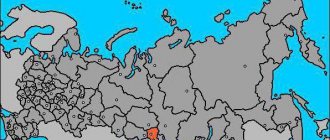Physiographic characteristics
The city is located in the seventh time zone at an altitude of about 250 meters above sea level. To get to the capital of Russia from Novokuznetsk, you will have to travel more than 3.5 thousand kilometers along roads. However, remoteness from Moscow does not affect the cultural and economic development of the locality. The area of Novokuznetsk is 424 square meters. km.
The city has a continental climate with significant annual temperature fluctuations. In winter it is always frosty here, and in summer it is mostly sultry. The air temperature can change sharply throughout the day. The average annual air temperature is +2 degrees Celsius.
Novokuznetsk also has its disadvantages. The population has decreased since the end of the last century due to the unfavorable environmental situation. There are many factories operating here, so the air is polluted. In addition, 145 thousand vehicles are registered in the city. Unfortunately, Novokuznetsk ranks seventh in Russia in terms of household waste levels.
Population in municipal, urban areas
Located in the south of Western Siberia, on both banks of the Tom River, in the southern part of the Kemerovo region.
The city was originally founded in 1618 as a fort near the confluence of the Kondoma River and the Tom River.
In 1620, the fort was moved to a high terrace on the right bank of the Tom (in this place the Kuznetsk fortress is now located).
Novokuznetsk is characterized by a continental climate with significant annual and daily temperature fluctuations.
Now we will tell those interested in the climate in the city of Novokuznetsk, what the average temperature was according to research over the past few years, the maximum and minimum values, as well as the average and norms of precipitation:
Climate of the city of Novokuznetsk (weather, precipitation)
| Index | Jan. | Feb. | March | Apr. | May | June | July | Aug. | Sep. | Oct. | Nov. | Dec. | Year |
| Abs. Max. | 4,2 | 7,9 | 18,3 | 30,1 | 34,8 | 35,0 | 36,0 | 35,9 | 31,0 | 24,9 | 17,4 | 7,3 | 36,0 |
| Avg. Max. | −11,1 | −8 | −0,7 | 8,5 | 18,3 | 22,7 | 24,8 | 22,7 | 15,9 | 7,9 | −3 | −9,1 | 7,4 |
| Avg. pace. | −15,2 | −13 | −5,9 | 2,9 | 11,5 | 16,4 | 18,8 | 16,4 | 9,9 | 2,9 | −6,7 | −13,2 | 2,1 |
| Avg. min. | −18,5 | −16,7 | −10 | −1,8 | 5,8 | 11,1 | 13,7 | 11,2 | 5,3 | −0,6 | −9,5 | −16,5 | −2,2 |
| Abs. min. | −47,7 | −42,2 | −33,9 | −26,1 | −8,9 | −1,4 | 2,2 | 0,2 | −6,7 | −23 | −37,7 | −42,8 | −47,7 |
| Norm of siege. | 24 | 18 | 16 | 26 | 38 | 54 | 69 | 56 | 36 | 42 | 38 | 30 | 447 |
Whether the population of the city of Novokuznetsk is decreasing or increasing, what is its official number according to the census as of January 1, 2022, in its municipalities, urban areas, we will learn about this later, when accurate information appears, but for now we will present the currently available figures.
Date of foundation of Novokuznetsk: 1618
Time zone: MSK +4, UTS +7
History of the locality
This is one of the oldest cities in all of Siberia. The settlement was founded in 1618. The Tom River flowed in close proximity, near which people preferred to settle. The city of Novokuznetsk in the Kemerovo region acquired sad fame during the Civil War. During the class struggle, all representatives of the nobility were brutally killed, indiscriminately.
Significant development of the settlement was observed in 1931. At this time, construction of new houses begins. And already in 1932 the city was renamed Stalinsk. This name lasted for about 30 years. Novokuznetsk was returned to its previous name in 1961.
The modern city is developing rapidly. New houses appear every year. Young people no longer want to leave here, as they did several decades ago.
History of Novokuznetsk
Foundation of the city
Founded in 1618 as the Kuznetsk fort in the upper reaches of the Tom River, not far from the mouth of the Bryaz River (the right tributary of the Tom) and almost opposite the mouth of its left tributary, the Kondoma River. It got its name from the occupation of the local population - blacksmithing. Initially, it was built as a small winter quarters with the aim of securing the collection of yasak and was designed for 10-12 yearling Cossacks. The prison was built by a combined detachment of Tomsk, Tyumen and Verkhoturye servicemen under the command of the Tomsk boyar children O. Kokorev, M. Lavrov and O. Mikhalevsky (Kharlamov). The remains of the fort were discovered during archaeological work in 2000 S.E. Shirin. To ensure the safety of the yasak population from attacks by the Kyrgyz and Kalmyks, a new fort was built in 1620, designed to accommodate 50 people. The Tomsk authorities, taking into account the peculiarity of the topography of the right bank of the Tom, where the fort was built (at the foot of Mount Voskresenskaya), which negatively affected its defense capability, and the small areas of land on the right bank, necessary for establishing service and sovereign arable land here, decided to construction of a new fort on the left bank of the Tom. However, the Tomsk Cossacks-year-olds opposed this, and under their pressure, the fort was erected in the “old place”. Probably in the same year or in 1621 the first tithes were plowed for service arable land. In 1625, under the walls of the fort, the sovereign's tithe arable land was established. In 1621/22, a wooden Transfiguration Church was erected in the fort. Throughout the century, the fort was rebuilt several times. Under the second Kuznetsk governor E.I. Baskakov (1622-25) the fort was rebuilt, and the total length of its walls increased 4 times. It is unknown when exactly Kuznetsk received city status, G.F. Miller attributed this event to 1689. However, even after this, Kuznetsk is often called a fort in documents.
XVII - XIX centuries
In the 17th century Kuznetsk developed as an administrative center and a center for collecting yasak from local residents (Shors and Teleuts). A distinctive feature of Kuznetsk and its district throughout the 17th and first half of the 18th centuries. was its border position. Frequent attacks by the Kyrgyz and Kalmyks on Kuznetsk and its surroundings hampered the development of this region by the Russians. At the end of the 17th century. in the Kuznetsk fort there lived “gunners and workers, and service people of all ranks” 289 people, 40 townspeople, 100 sovereign arable peasants. The border position of Kuznetsk contributed to the fact that it was often used as a transit point for Russian ambassadors to the Altyn Khans, and its service people went as ambassadors to the Teleuts and Kalmyks.
In the middle of the 18th century. Kuznetsk became an important fortified point of the Biysk guard line. It was used as a place of exile for political criminals: in 1856-57, while serving exile in Semipalatinsk, F.M. came to the city. Dostoevsky; In 1864-65, the famous publicist and revolutionary V.V. served his exile in the city. Bervi-Flerovsky, in the 1900s. — socialist V.P. Obnorsky.
- Polosukhin Viktor Ivanovich - hero of the defense of Moscow in 1941, commander of the 32nd Siberian Rifle Division.
- Selts Evgeniy (born July 14, 1958) is a poet, prose writer, and journalist.
- Skachkov Kirill Sergeevich - International Master of Sports in table tennis, participant of the Olympic Games in London 2012.
- Evgenia Valerievna Smolyaninova is a Russian singer, performer of Russian folk songs, romances and art songs, composer.
- Vera Yakovlevna Solomina - sister of mercy, hero of the Great Patriotic War.
- Spassky Grigory Ivanovich is a Russian historian, member of the Imperial Academy of Sciences.
- Chigishev Evgeniy Aleksandrovich is a Russian weightlifter, vice-champion of the Olympic Games in Beijing.
- Shtokolov Boris Timofeevich - opera singer (bass), People's Artist of the USSR, laureate of the USSR State Prize, professor.
- Shubarin Vladimir Aleksandrovich is an outstanding dancer, talented choreographer, Honored Artist of the Russian Federation.
- Yavorsky Felix Leonidovich - Soviet film actor. Since 1954 - actor at the Theater-Studio of Film Actors. I did a lot of dubbing of foreign films.
- Aloyan Mikhail Surenovich - Russian boxer, two-time champion of Russia, European champion 2010, bronze medalist of the 2012 Olympic Games
City population
The population density of Novokuznetsk has recently increased significantly, although there was a slight decline in the early 90s. The economic crisis of those years forced many indigenous people to go abroad to work. Many chose not to return.
If you look at the history of the settlement, you can understand that the population in the city of Novokuznetsk was growing rapidly. At the time of the city’s founding, only a few dozen people lived here. The demographic peak was observed in 1992. According to the census, the population was 600 thousand people. For 2022, this figure has decreased slightly. Now the official population in Novokuznetsk is 552 thousand people.
Despite the fact that Novokuznetsk does not have the status of a regional center, it remains one of the largest cities in Siberia. According to statistical data, representatives of the fairer sex predominate in the village (55% of the total population).
The composition of the population of Novokuznetsk may also seem interesting. For the most part, these are Russians (94%). However, representatives of other nationalities also live here. These are Armenians, Tajiks, Germans, Ukrainians, Tatars, Gypsies, Kazakhs, Jews, Chuvash, Kyrgyz, etc.
Novokuznetsk city photo. Photo of Novokuznetsk
On our website you will find photographs of Novokuznetsk from different years. Novokuznetsk photo of the city in different years from Soviet times to the present day.
Information about the city of Novokuznetsk on Wikipedia: Novokuznetsk
Link to Novokuznetsk website. You can get a lot of additional information by reading it on the official website of Novokuznetsk, the official portal of Novokuznetsk and the government. Official website of Novokuznetsk
Administrative structure
Novokuznetsk is a city of regional subordination, despite its impressive size. Within its borders there is a municipal entity - Novokuznetsk urban district. The settlement has six intra-city districts. The largest of them is Zavodskoy. As of 2022, more than 97 thousand people live here. The smallest is the Kuznetsk district with an area of only 36 square meters. km. 49 thousand people live here.
The authorities are represented by the Novokuznetsk city council, the mayor of the city, the city control committee and the city administration. Courts are also open. Experts believe that power in Novokuznetsk is structured correctly. The population independently elects deputies to the city council in 18 districts. The last elections were held in September 2016.
What is the population of the city of Novokuznetsk?
The city consists of six intra-city districts that are not municipalities:
| Area | Area, km² | Population (2021) |
| Factory | 109,10 | ↘95,081 people |
| Kuznetsky | 36,11 | ↘48,344 people |
| Kuibyshevsky | 92,49 | ↘77,773 people |
| Novoilinsky | 22,49 | ↘76,285 people |
| Ordzhonikidzevsky | 95,62 | ↘82,585 people |
| Central | 66,52 | ↘164,515 people |
With the population of the city of Novokuznetsk as of January 1, 2022, how many people live in this territory, people in municipalities and this locality, this territorial unit of the Russian Federation, that’s what we figured out here, we made our contribution to satisfying the requests of those interested in this statistical information .
Unfavorable days in 2022, difficult for health and well-being
Lunar calendar for hair cutting 2022, favorable days to cut hair
Economy and industry
The city is developing at a rapid pace. Great attention is paid to people who decide to start their own business. The city administration encourages any such attempts. Many people get the opportunity to get a loan to develop their business on preferential terms. It is no coincidence that in 2009 Novokuznetsk took 27th place in the ranking of “30 best cities for business.” According to purchasing power, the locality took 15th place.
The economy of Novokuznetsk is developing rapidly thanks to a large industrial sector. Just look at the West Siberian Metallurgical Plant, which was founded in 1934. Rolling production today produces nine types of products. There is also a steel rolling production here.
The Novokuznetsk Metallurgical Plant can also be called the pride of the city. It was founded only in May 2003, but has already become famous. A foundry and coke-chemical production have been opened here.
The city has developed various industry sectors. The industry of Novokuznetsk is not limited to metallurgy. There are also achievements in the field of mechanical engineering and electrical energy. The food industry is also developed. Production successes were also achieved at the Novokuznetsk distillery.
Navigation
The history of Novokuznetsk begins in the mists of time, with a small ancient fortification on the lands of the Abinsk people, who were called blacksmiths for their ability to forge iron. Hence the name of the fort that arose here in 1618 - Kuznetsky. In 1622, Kuznetsk district was formed.
Existing as a fortress-defender of the south-eastern borders of the Russian state from the Dzungars and Kirghiz, which received the status of a city in 1689, Kuznetsk “a city built into a fence a sazhen high near a city measuring 1050 sazhens, with five towers on the walls,” became the center of a vast region , gradually developed in terms of construction and trade. However, the city did not receive significant development until 1930.
The new legendary history of the city began with the construction of a railway in 1914 to Kuznetsk and with the decision to build the Kuznetsk (then Telbes) metallurgical plant by the Russian government in 1927.
Pitted with pits and dotted with access railway tracks, the construction site of the Kuznetsk Metallurgical Plant gradually took on the shape of a large industrial enterprise with main workshops and auxiliary production units.
At the same time, the city was being built with the first stone residential buildings according to the master plan created by the outstanding German architect and urban planner Ernst May.
Over the following years, the city acquired its own unique appearance, a unique character, expressed in straight, bright streets, memorable squares and architectural ensembles. The best architects of the country implemented their wonderful ideas here.
Inscribed in golden letters in the history of Novokuznetsk are lines telling about the exploits of Novokuznetsk residents during the Great Patriotic War.
64 thousand city residents went to the front, more than 14 thousand of them died. 52 residents of Novokuznetsk were awarded the high title of Hero of the Soviet Union.
The contribution of the Kuznetsk home front workers is invaluable to the overall treasury of the great victory. Kuznetsk metallurgists quickly mastered the technology for producing armor steel and rolling it. Tank armor, aluminum, rails, coal, and coke flowed in a continuous stream to various enterprises in the country, where a stubborn labor battle with the enemy was also going on.
The post-war years of Novokuznetsk are marked in history as the years of the highest growth, the construction of enterprises, the development of new coal mines and open-pit mines, the construction of cultural, educational, and healthcare facilities.
In record time, one of the largest in the world, the West Siberian Metallurgical Plant, was built, which is still the guarantor of the well-being of Novokuznesk residents.
The crisis that struck Soviet society at the turn of the 80s and 90s of the 20th century dealt a significant blow to the city’s economy. Since the second half of the 80s, a steady decline in economic growth rates began. During the transition to a market economy, a significant number of enterprises went bankrupt and simply ceased to exist. There is a huge gap in the level of technology, quality of goods and living standards.
However, despite the difficult economic situation in recent years, the city has retained not only its industrial potential, but also its workforce. Novokuznetsk is still a powerful industrial center of Siberia today. 1,200 in the city , about 50 of which are leading in their industries.
The materials available in this section from historians and researchers involved in the history of the Kuznetsk region are divided into categories:
- founding of Kuznetsk and its district in Western Siberia;
— population of Kuznetsk;
— protection of the borders of Western Siberia;
— craft, trade, economic activity;
- coat of arms of the city;
— materials relating to the period of the city’s development in the 17th century;
— materials relating to the period of the city’s development in the 18th century;
— materials relating to the period of the city’s development in the 19th century;
— materials relating to the period of the city’s development at the beginning of the 20th century.
Transport
Novokuznetsk is a large railway junction of the Kuzbass branch of the Siberian Railway. Routes to Moscow, Anapa, Novosibirsk, St. Petersburg, Tomsk, Abakan, etc. are laid through the settlement. From Novokuznetsk you can easily get to anywhere in the country. From 2011 to 2013 The station building was under reconstruction. However, train and electric train flights were not cancelled. Novokuznetsk also has air connections with many cities in the country.
You can hear a lot of good reviews about the Novokuznetsk bus station. The population claims that it is possible to comfortably get to the nearest villages. There is also intercity communication.
Urban transport deserves special attention. Trams, buses, trolleybuses and minibuses operate in Novokuznetsk.
Education
There are many educational institutions in Novokuznetsk. Great attention is paid to preschool development. The city has 11 public and several private schools. You can hear a lot of good reviews about gymnasium No. 10. This is the oldest municipal educational institution in Novokuznetsk. It was founded in 1790. In a four-story standard building, children aged 6 to 17 years can receive education.
There are several vocational schools and technical schools in Novokuznetsk. There are also continuing education institutions. There are also several universities. The most popular is the Siberian State Industrial University, which was founded in 1930. The institution has several scientific schools in economics, chemistry, metallurgy, etc. The Novokuznetsk Employment Center always offers fresh vacancies for young professionals.
Attention is also paid to the development of children. The city has six art schools, three music schools and two art schools. There is also a city station for young naturalists.
Healthcare
The city administration pays considerable attention to the health of the population. Therefore, healthcare institutions are supported from all sides. There are several city clinical hospitals where patients can receive high-quality care from specialists of a narrow and broad profile. There is also an institute for the rehabilitation of disabled people and an institute for the hygiene of occupational diseases.
You can hear a lot of good reviews about the Novokuznetsk perinatal center. Here you can agree on the upcoming birth. In addition, there are family planning clinics. Specialists provide their assistance to couples who have been unable to conceive a child for a long time. If indicated, in vitro fertilization can be performed. It serves not only the indigenous population of Novokuznetsk, but also visitors.
You can hear a lot of good reviews about the Novokuznetsk State Institute for Advanced Medical Studies. Internships are available to specialists in the following specialties: obstetrics, dermatology, maxillofacial surgery, dentistry, therapy, pediatrics, psychiatry. The Novokuznetsk Employment Center also offers vacancies for doctors.
Culture
Novokuznetsk is characterized by comprehensive development. The city is famous for its large number of museums and interesting architectural structures, although before the revolution there were only a few stone buildings in the village. Mass development of Novokuznetsk began in 1929. A city development plan was created, and new areas appeared.
Today there are four theaters in the city. You can hear a lot of good reviews about the drama theater. This is the most important cultural center of the city. Construction of the theater began in 1932. In just 200 days, it was possible to erect a building with 1,200 seats. Today, modern plays with famous actors are staged here.
The city also has a cinema, which dates back to Soviet times. It has a corresponding name - “October”. Four cinema halls broadcast modern films and cartoons almost around the clock.
Religion
There are many religious communities operating in the locality. The Orthodox one remains the largest. The most visited is the Transfiguration Cathedral. This is the first temple in Novokuznetsk, which was built in 1618. For several centuries it was the main temple of the city. In 1835 the cathedral was rebuilt from stone.
The Church of the Holy Apostles Peter and Paul also deserves attention. The cathedral was built in 1999. The temple has a library with a collection of more than 700 thousand copies. In total, there are more than 15 Orthodox churches in Novokuznetsk.
Since 1993, the Jehovah's Witnesses organization has officially operated in the city. There is also a local Muslim organization. In addition, some local residents profess Judaism, Protestantism, and Catholicism.
NOVOKUZNETSK
NOVOKUZNETSK, a city in Russia, in the south. parts of the Kemerovo region, the center of the Novokuznetsk district. The largest city in the region: us. 549.6 thousand people (2012). Located on the river. Tom (pier) at the confluence of the Aba and Kondoma rivers. Railway node The Kemerovo – Leninsk-Kuznetsky – Novokuznetsk – Mezhdurechensk highway passes through N. Airport.
Novokuznetsk. Transfiguration Cathedral. 1792–1801, 1822–30.
Novokuznetsk. Cinema "Kommunar". 1933. Architect M. Kassel.
The oldest settlement on modern territory. N. arose in April. - May 1618, when a detachment under command. O. Kharlamov-Mikhalevsky, M. Lavrov and O. Kokorev on the right bank of the river. A small winter hut was founded in Tom, which received the name. Kuznetsk fort. In the summer of 1620 at hand. T. S. Bobarykin and O. G. Anichkov built a fort on the site of the winter hut; after 1620 a permanent garrison was stationed here. Since 1622 the center of the county. All R. 1670s the fort was a tree. fortress with 8 towers. Until the beginning 18th century was a border outpost of Rus. state in South. Siberia, repeatedly repelled attacks by the Kyrgyz, Tomsk and Kuznetsk Tatars, Teleuts and Dzungars (1624, 1633, 1635, 1638, 1640, 1648, 1665, 1667, 1673, 1675, 1682, 1700, 1709). In 1682, in one of the most significant defenses. During the battles near the Kuznetsk fort, the combined forces of the Tuvans and Kyrgyz were defeated. Since 1689 the city of Kuznetsk. County town of Siberian (1708–79) and Tobolsk (1796–1804) provinces, Kolyvan region. (1779–83), Kolyvan province. (1783–96). In 1717, the first bastion-type tree-earth fortress beyond the Urals was erected in Kuznetsk (after 1750 the wooden fortifications fell into disrepair). In 1799–1820 in Kuznetsk in connection with a possible war. under the threat from China, a stone fortress was erected (after 1846 it was transferred to civilian jurisdiction, partially turned into a prison; now the Kuznetsk Fortress museum). District (1804–22, 1898–1924) and district (1822–98) city of Tomsk province. At 19 – beginning. 20th centuries handicraft and trade activities developed (annual fairs were held since 1891). In 1913, in connection with plans to create a metallurgical district in the vicinity of the city. The enterprise began construction of a railway (constant traffic along the Kuznetsk - Kolchugino line was opened in 1926), in 1914–15 on the left bank of the river. Tom (opposite Kuznetsk) a village was formed. Garden-city. In March 1918, an owl was installed in the city. power; fell in July as a result of the Czechoslovak Corps uprising of 1918. In the summer - autumn of 1918, the city was under the control of the Provisional Siberian Government, then the Ufa Directory (Nov. 1918) and the "Omsk Government" (Nov. 1918 - Dec. 1919). As a result of the uprising of the soldiers of the Kuznetsk garrison on December 2, 1919, the Soviet Union was restored. power. On December 12, 1919, a detachment of Altai partisans G.F. Rogov and I.P. Novoselov entered Kuznetsk and carried out mass executions of opponents of the Owls. authorities in the city. At the end of December, regular units of the Red Army entered the city. Regional center of Tomsk province. (1924–25), district (since 1925) and district (1925–1926) center of the Siberian Territory (1925–30), West Siberian Territory (1930–32). In 1929, under the direction of I.P. Bardin began construction of a metallurgical plant. plant near the village Garden City (launched in 1932; now part of the Evraz United West Siberian Metallurgical Plant enterprise). In 1929 Sad-gorod received the status of a workers' village, and in 1931, together with several surrounding villages, it was transformed into the city of Novo-Kuznetsk. In 1932, the cities of Kuznetsk and Novo-Kuznetsk were united into the city of N. Regional center of the West Siberian Territory (1932–37), Novosibirsk Region. (1937–43), Kemerovo region. (since 1943). In 1932, railway traffic was opened. line Novokuznetsk - Kandalep. In 1932–61 it was called Stalinsk. After the start of Vel. Otech. During the war in 1941, a metal structures plant (now Kuznetsk Metal Structures) was evacuated to Stalinsk from Dnepropetrovsk. The 1252nd Infantry was formed in the city. Regiment of the 376th Kuzbass Infantry. divisions, department ski battalion (both in 1941), 237th Piryatinskaya rifle. division (1942), workers of the Kuznetsk metallurgical plant. plant collected St. 4 million rubles for the construction of the Kuznetsk Metallurg tank column (1943). In Jan. 1943 The aluminum plant was launched (now RUSAL Novokuznetsk). In 1952, permanent railway traffic was opened. line Stalinsk - Barnaul, in 1959 - Stalinsk - Abakan. In 1964, the West Siberian Metallurgical Plant was launched. plant (now part of the Evraz United West Siberian Metallurgical Plant enterprise).
In the old part of the city (the first regular development plan for Kuznetsk was approved by Empress Catherine II in 1786) the following were preserved: baroque-classical. Spaso-Preobrazhensky Cathedral (1st floor – 1792–1801; 2nd floor – 1822–30; stone fence with gate – 1832–33), former buildings. Kuznetsk Treasury (1780, architect Pochekunin; the treasury was located in 1799 – 1920s) and Kuznetsk School, distillery; residential buildings of the 18th–19th centuries. from the merchant mansions (the house of A.E. Fonarev is now a branch of the Kuznetsk Fortress museum); as well as a protected grove of river black poplars (Topolniki). Intensive development of the left bank part of the city began according to the 1931 plan in connection with the construction of the Kuznetsk Metallurgical Plant. plant (1929–1932; project by the American company “Frain”; administration building on Pobedy Square, architect A. D. Kryachkov): 3–4-storey buildings in the constructivist style (1929–34, German architect E. May), Siberian metallurgist. institute (now the Siberian Industrial University), the Kommunar cinema with a semicircular rotunda (German architect M. Kassel; both 1933, in the style of constructivism), the Palace of Culture and Technology of the Novokuznetsk Metallurgical. plant (1936, architects E. Ya. Umansky, K. Ya. Likher). In 1934–1936, the right and left banks of the river. Tom are connected by a bridge. In the 2nd half. 1930s – 1950s (according to the plans of architects B. E. Svetlichny, G. M. Slepykh and others) new centers were created. highways (Kurako, Metallurgov and Bardin avenues fanning out from the railway station) and squares (Teatralnaya, Cosmonauts, etc.), Center. a park of culture and recreation with porticos, fountains and sculptures. In the style of owls. neoclassical built: numerous. residential buildings, that is. degrees that determine the appearance of N. (on Kirova Street, 1936–39, architects I. A. Golosov, F. F. Ananyev and others; on Metallurgov Avenue, 1941, 1947–55, architect N. A. Brovkin; etc.), department store (1938–41, architect P.I. Oturin; completed in 1952–56), hospital town (1948–52, architect S.I. Korotkov), Palace of Culture of the aluminum plant (1956–58 , architect L. V. Luzhbin). The embankments of Aba (residential buildings 1949) with a bridge across the river (1952–1953, architects A.E. Mertvetsov, N.A. Brovkin) and a bridgehead square were organized. Mayakovsky (at home 1954–56). Among the buildings of the 1960s: the city committee of the CPSU (1960–63, architects E. A. Avdeev, V. I. Gerashchenko), dramatic. theater in the style of owls neoclassicism (1962–63, architects A.I. Zaitsev, S.P. Chalaya), a new bridge across the river. Tom (1963, engineer A.A. Kobenko, architect A.I. Vypov), air terminal (1967, architect V.G. Golovachev). In the 1970s built: Novokuznetskaya Hotel (1970), House of Public Services (1971), Center. mountains fuck them. N.V. Gogol (1971), circus (1967–74), new society. center with a complex of administrative, trade and cultural institutions; in the 1990–2000s – c. Saints Peter and Paul (1999), Catholic. Church of St. John Chrysostom, small church. St. George the Victorious (2006), the multi-domed Cathedral of the Nativity of Christ - a memorial to the fallen miners (2000–12).
Monuments: A.V. Suvorov (1953, copy of the work of B.I. Orlovsky in St. Petersburg), S.M. Kirov (1958, copy of the work of N.V. Tomsky), “Fighters of the Revolution” (1963, architects E A. Avdeev, V. F. Kazakov), metallurgist acad. I. P. Bardin (1965, sculptor S. D. Shaposhnikov, architect Yu. N. Gumburg), V. V. Mayakovsky (1967, sculptor B. A. Plenkin, architect V. P. Litvyakov).
Among scientific organizations – Siberian Research Institute The design institute is building. materials (1939), East. n.-i. Mining Institute (1959), Research Institute of Complex Problems of Hygiene and prof. diseases of the Siberian Branch of the Russian Academy of Medical Sciences (1976), N.-i. Chemical and Pharmaceutical Institute (2003); branches: Vost. n.-i. Coal Chemical Institute (headquarters in Yekaterinburg), Research Institute of General Reanimatology of the Russian Academy of Medical Sciences; scientific representation center "Gazprom Promgaz". Universities: Siberian State. industrial university (1930; modern name and status since 1998), Kuzbass state. pedagogical academy (1957); branches of Kemerovo State University, Kuzbass State University technical University, Tomsk Polytechnic. University and other universities.
Museums: local history (1927; based on the archaeological, geological and ethnographic collections of D. T. Yaroslavtsev; building - 1956), art (1961; Russian painting of the 18th–20th centuries), Literary and Memorial Museum of F.M. Dostoevsky (1980; in the former house of the manager of the gold mines of Baikalov and the house in which the writer stayed in 1856–57), historical and architectural. museum "Kuznetsk Fortress" (1991; by the end of the 2000s, the Barnaul Gate, Tomsk and Kuznetsk semi-bastions, barracks, infirmary, and chief officers' house had been restored). Dramatic theater (1933), puppet theater "Skaz" (1942), Chamber drama. Theater "Monday" (1999).
Large sports center. Hockey club "Metallurg" (founded in 1949) plays in the Kontinental Hockey League (since 2008); hosts rivals at the Sports Palace of Kuznetsk Metallurgists (7.5 thousand seats). Football club "Metallurg-Kuzbass" (1937) participates in the Football National Championship. leagues; hosts opponents at the Metallurg stadium (8 thousand seats). Aquatics competitions are held in the 50-meter Zapsibovets swimming pool. The Virazh ski slope and the Tayozhny ski complex, located near Novokuznetsk, are popular.
Important industrial center of Kemerovo region The most developed industries are metallurgy and the production of finished metal products, mechanical engineering, coal, chemical, and food industries. The largest enterprise is Evraz United West Siberian Metallurgical Plant [steel ingots, pig iron, castings, rolled products (including the largest production of tram and railway rails in Russia), wire, coke chemicals. products], on its territory - West Siberian Thermal Power Plant, 600 MW; Scrap metal processing for the needs of the plant is carried out by the enterprise "SGMK-Vtorresurs". Dr. large metallurgical enterprises - plant of the Kuznetsk Ferroalloys company (main product - ferrosilicon), aluminum plant RUSAL Novokuznetsk (primary aluminum and its alloys, including for export), mechanical repair. plant (iron, steel, bronze casting). Production of metal structures (Tank Metal Structures Plant named after N. E. Kryukov, Kuznetsk Metal Structures). Mechanical engineering. enterprises specialize in ch. arr. in the production and repair of mining equipment: Kuznetsk Mashinostroit. plant, Mining Technical Company, Gidromash, plant of the EXC company (mining power electrical equipment). Among other important enterprises are the Organika company (finished medicines), factories: carriage building (freight gondola cars), Universal (cast iron bathtubs and sewer pipes; sanitary ware, etc.), plastics, Siberian Goods (enamel. dishes). Leading enterprises in the food industry are the plant of the Kuzbass Food Processing Plant company (a large producer of meat products in the region), a confectionery factory, and a cold storage plant (as part of the Snezhny Gorodok holding company). Distillery "Kuzbass". Kuznetskaya CHPP (as part of the Kuzbassenergo company; over 100 MW).
Coal mining in N. and the surrounding area is carried out at the following mines: Abashevskaya, Esaulskaya, Erunakovskaya-8 (commissioned at the beginning of 2013) (all are part of the United Coal Company Yuzhkuzbassugol, owned by Evraz Group), “Antonovskaya”, “Bolshevik”, “Polosukhinskaya” (all are part of the Sibuglemet holding); at the Taldinsky open-pit mine (branch of the Kuzbassrazrezugol company).
Museums
The most visited is the local history museum. Its exhibitions are dedicated to the natural resources of the city, historical finds, and the flora and fauna of the region. Historical lectures are held here, as well as excursions dedicated to the civil war and other events of Novokuznetsk. The population loves to visit this museum, despite the fact that the exhibitions here rarely change.
The art museum also attracts attention. It was founded in 1961. The works of famous artists, as well as local talented craftsmen, are exhibited here.
Other sights of Novokuznetsk
Those who come to the city for the first time will always have something to do. You should definitely visit the city park named after Gagarin. Here you can hide in the summer heat, and there are many attractions for lovers of active recreation. There are cafes and restaurants in the immediate vicinity.
The singing fountain may also be interesting for visitors. This modern architectural structure is located in the city center. Jets of water shoot out from under the bars and classical music is heard. Although local residents claim that for the last few years the tunes have been played only on weekends.
Those who come to Novokuznetsk in winter should definitely visit the Forest Republic. This is a convenient ski resort, which is located outside the city. In winter, a regular bus runs here. You can easily get there by your own transport. Reviews show that this place is ideal for beginner skiers.
